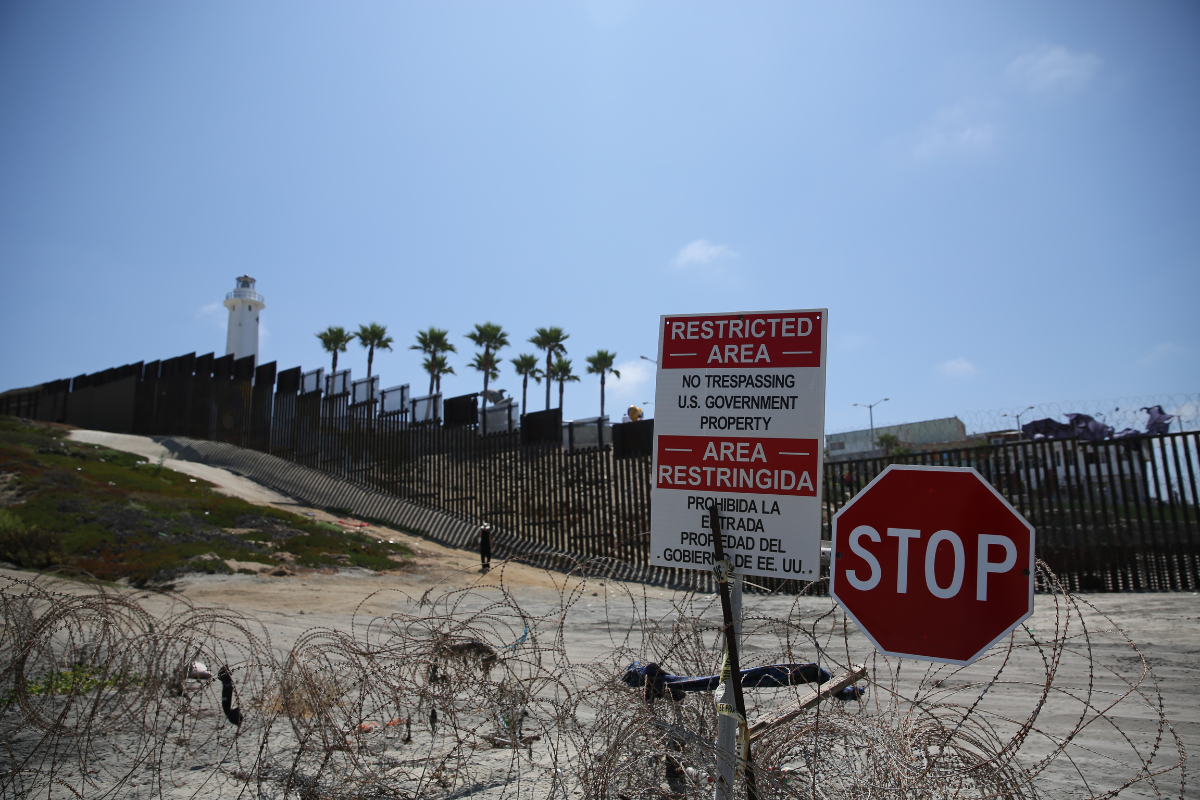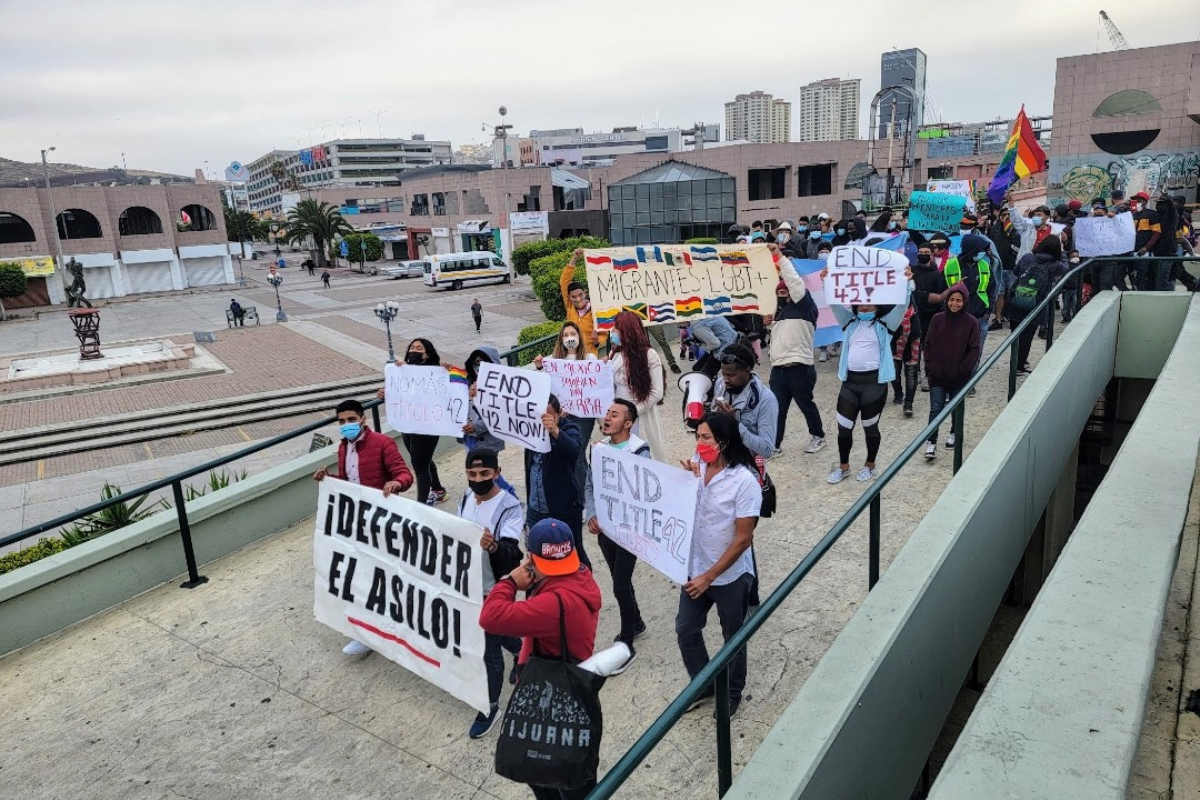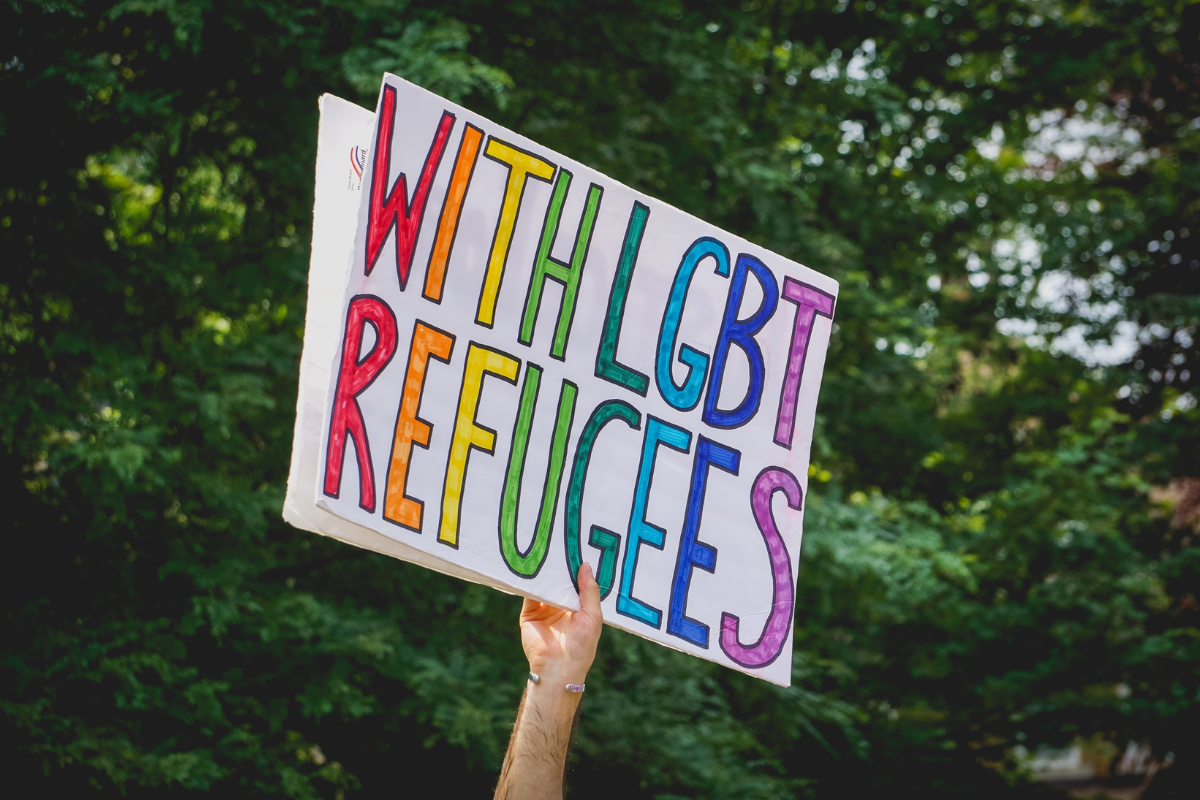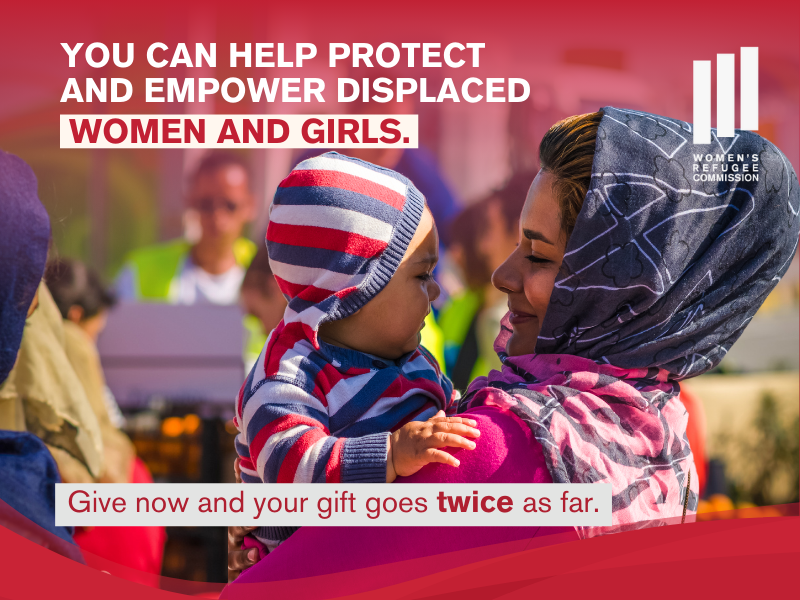Across Mexico, thousands of people who have fled their homes due to violence or persecution are making the treacherous journey to reach the United States border to seek safety. Among them are people who identify as lesbian, gay, bisexual, transgender, queer, and/or intersex (LGBTQI+).
All people fleeing conflict and crises who are trying to reach the US face many dangers. LGBTQI+ people who are escaping human rights violations and other threats face unique challenges and additional risks. In June, as we celebrated Pride Month, the Women’s Refugee Commission (WRC) and Washington University in St. Louis convened more than 20 experts to discuss the experiences of LGBTQI+ migrants in Mexico.
WRC also spoke with Emem Maurus, legal director of the Border Butterflies Project, about the challenges and discrimination LGBTQI+ asylum seekers face on their way to the US-Mexico border and once they reach the United States. The Border Butterflies Project launched in October 2019 and is a joint initiative of the Transgender Law Center, the Black LGBTQIA+ Migrant Project, and Familia: Trans Queer Liberation Movement. The project provides information and helps LGBTQI+ people find medical support and legal representation.
In our meetings and conversations, we learned that people who identify as LGBTQI+ are more likely to travel alone and without any family support.

LGBTQI+ people commonly leave their homes to escape violence or discrimination. But once they begin the journey to the US, the risk of that violence and prejudice may follow them.
“LGBT people are marginalized, criminalized, and persecuted in many countries around the world,” Emem says. “They leave for these reasons. We also see a reality that when countries experience instability, LGBT folk become more of a target by governments or citizens, creating more of a push factor. On the journey to safety, they often don’t have the same familial or support networks to rely on, making the journey more dangerous.”
For example, a person who identifies as LGBTQI+ may want to join a group of migrants, which offers protection support during the journey. However, they may experience the same anti-LGBTQI+ sentiment while part of the group that they faced at home, Emem says.
“For people who do not feel safe as they travel, they often face the choice of trying to hide their identity or create small traveling groups amongst themselves and break off” from the larger group of migrants, he says.
Mexico is a particularly harrowing place for LGBTQI+ individuals. Violence against LGBTQI+ people is pervasive in Mexico, and transgender women, in particular, face grave danger, including from police and government officials meant to protect them.
At the June convening in Guadalajara, WRC staff learned from shelter and legal service providers about the social invisibility, risks of targeted violence, and pervasive lack of security and basic needs that LGBTQI+ migrants experience while in Mexico. Medical and mental health services, including prevention and trauma services, do not exist or have limited expertise in working with LGBTQI+ people in Mexico. Shelters, with limited support, struggle to provide food assistance, safety, and culturally competent and trauma-responsive care.
And once people who identify as LGBTQI+ reach the US, they must also often go it alone, says Emem.
“We see many [LGBTQI+] people entering the United States without stable housing, which really makes their acclimatization so much harder,” Emem says. “Once in the United States people are not always welcomed by family to stay until they get on their feet due to the same prejudice that caused them to leave” their home country.
We also learned that LGBTQI+ people may have to hide their sexual orientation and gender identities, even in the US, or face detention or homelessness.

Some cultures are less accepting of LGBTQI+ people, so some LGBTQI+ asylum seekers may feel compelled to hide their sexual orientation or gender identity to seek help from family members, Emem says. One asylum seeker from Venezuela Emem worked with has family in the US but is living in detention because they fear if they come out as transgender, their family would not accept them or help them.
“We have a lot of LGBT folks who are going straight back into the closet to go and stay with family members,” Emem says. “We’re really trying to really honor the agency of asylum seekers. We really aim to help build out the agency of folks and help them be in a new country.”
These are our proposed solutions.

At WRC, we know that seeking asylum is challenging for everyone trying to reach safety and rebuild their lives. For many LGBTQI+ people, this process carries additional risks. There are solutions that would protect their rights and improve their well-being when seeking safety. These include:
- Strengthening systems of protection in Mexico and the region, including via initiatives and policies that protect LGBTQI+ migrants, defend their rights, combat discrimination, and provide security for human rights defenders.
- Building and improving networks of culturally competent social services providers for LGBTQI+ migrants during their journey.
- Increasing access to prevention services, including basic needs, employment, and housing assistance, as well as mental health and behavioral health services.
- Increasing migrants’ ability to enter at ports of entry so they do not have to risk their lives or wait for months in dangerous situations to seek safety in the United States.
- Increasing funding and support for shelters and other community programs that help welcome people seeking safety, especially those that address the specific needs of LGBTQI+ people.
These solutions would improve conditions for LGBTQI+ people seeking asylum. As LGBTQI+ people continue to seek safety, support from organizations like the Border Butterflies Project is essential. It’s also critical that the US and Mexican governments create more opportunities for LGBTQI+ people to safely access asylum—by increasing funding for shelters, allowing more immigrants to enter at ports of entry, and strengthening protection systems. All people deserve a chance at safety and the freedom to be free from violence and persecution solely because of who they are.
WRC’s Policy Advisor Kimiko Hirota contributed to this post.


